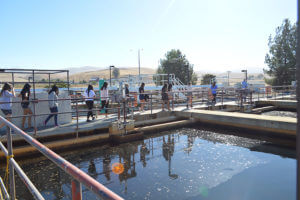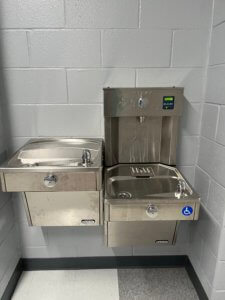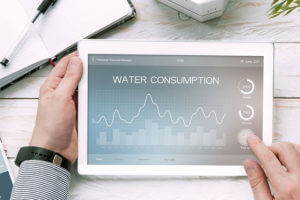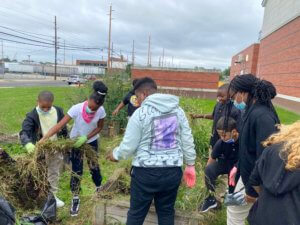6 Ways Schools Can Conserve Water
At the Go Green Initiative, we believe that conserving water conserves energy and because water is a finite resource reducing unnecessary consumption is essential.
- According to the EPA, less than 1% of the water on Earth can be used by people.

- Allocating resources to desalination of water can become intensive and wasteful water practices cause further harm.
To conserve resources and water, schools and students should:
1. Use Reusable Water Bottles

Carrying reusable water bottles can help eliminate unnecessary water consumption. The Go Green Initiative has worked with various schools to install hydration stations around campuses in need of drinking water. This gives students access to safe and clean water when needed without causing extra usage that can be wasteful.
2. Proactively Search for Reducing Leaks
17% of water is wasted nationally due to leaks in the delivery system – when these leaks go undetected or unfixed this number continues to increase. Schools are a big part of this problem when bathrooms, cafeterias, and other water systems are not adequately monitored.
are not adequately monitored.
An easy way for schools to fix this problem is proactively search for leaks and record water usage. At GGI, we train schools on Energy Star Portfolio Manager which allows schools to track their water usage and compare it to other schools in their district.
- This tool indicates when schools have higher water usage and potentially identify leaks.
- Once you sign up with ESPM, register with GGI.
3. Turn off the Sink when Washing Hands
Similar to at home, students should continue to turn off the sink while scrubbing their hands. Following CDC guidelines for washing your hands, by turning off the tap for 20 seconds when applying soap, you can save almost 6 gallons a day.
4. Use Water Buckets to Clean Labs & Art Studios
Art rooms and labs can use a lot of water when cleaning supplies and conducting projects. An easy way to help reduce this usage is by filling buckets with clean water to use to clean supplies and surfaces. By doing this, schools can eliminate turning water on and off and leaving faucets running for extended periods of time.
5. Find Alternatives for School Landscaping
 While schools might want to have “appealing landscapes,” it is important to remember that grass and other plants require a lot of water and maintenance. According to the Alliance for Water Efficiency, by using native plants that require little water to thrive in your region and only planting turf grass in areas where people will actively use it for recreation, schools can save
While schools might want to have “appealing landscapes,” it is important to remember that grass and other plants require a lot of water and maintenance. According to the Alliance for Water Efficiency, by using native plants that require little water to thrive in your region and only planting turf grass in areas where people will actively use it for recreation, schools can save
gallons of water.
6. Reduce Dishwashing by Using One Tray
Schools use a lot of water in cafeteria dishwashers as dirty dishes pile up. To help reduce this usage, schools should offer all-in-one trays that provide meals on a single plate and eliminate unnecessary dishes that need to be washed. In doing so, schools can reduce that amount of times they run their dishwashers, thus, conserving water.
- Reusable trays are a bonus strategy for schools – reducing solid waste over disposable trays!
Currently, the Go Green Initiative is working with nearby schools to help them create a shift in their water usage and help create better water conservation programs. By educating and training school staff, we hope to better track water usage in schools, find efficient ways to reduce high-usage areas, and implement long-term plans of water conservation.
These 6 easy steps listed above can lead to gallons of water being saved everyday. Understanding the harmful impacts of unnecessary water waste and executing water conservation tactics is a step in the right direction!
For more information about water conservation, click here: